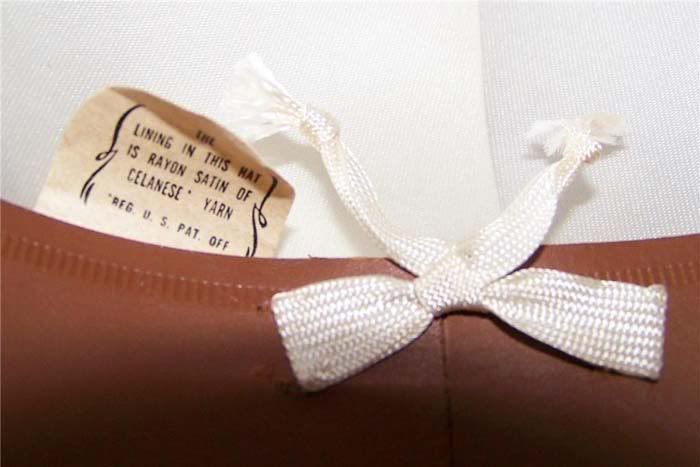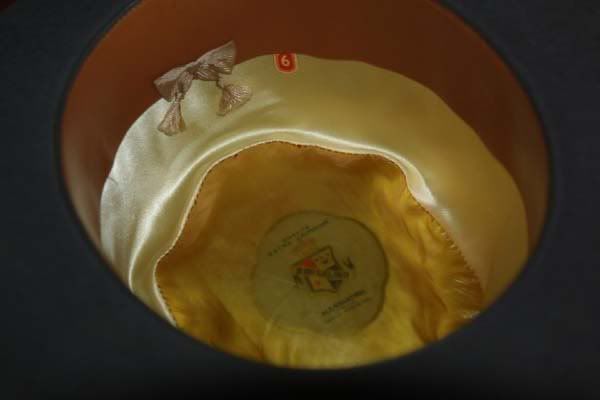jimmy the lid
I'll Lock Up
- Messages
- 5,647
- Location
- USA
Well, at least it appears to be an anomaly vis-a-vis vintage Stetsons -- but, as a more general matter, I'm not so sure...
Here's what I'm talkin' about...I have one vintage Stetson (my Amon Carter/Shady Oak OR) that has a sweatband that is not stitched together at the back of the hat (under the little bow, where the two ends of the sweat meet). Instead, the two ends are secured together by a piece of tape in back of the sweat, providing for a seamless effect. This photo gives you the idea:

I have one other lid with this same feature, a vintage Borsalino:

Baron Kurtz has pointed out in another thread that he has vintage Borsalinos where the sweat is joined in the above fashion.
So, this leads to a number of questions. First, is the "tape" method of joining the sweat tied to a particular time period? For example, was this a technique that, by definition, was used in the '30s/40's, for example, or did it extend beyond that time period? Did particular manufacturers use this technique, whereas others did not? What was the underlying rationale for this technique -- was it aesthetic? functional?
Any thoughts?
Cheers,
JtL
Here's what I'm talkin' about...I have one vintage Stetson (my Amon Carter/Shady Oak OR) that has a sweatband that is not stitched together at the back of the hat (under the little bow, where the two ends of the sweat meet). Instead, the two ends are secured together by a piece of tape in back of the sweat, providing for a seamless effect. This photo gives you the idea:

I have one other lid with this same feature, a vintage Borsalino:

Baron Kurtz has pointed out in another thread that he has vintage Borsalinos where the sweat is joined in the above fashion.
So, this leads to a number of questions. First, is the "tape" method of joining the sweat tied to a particular time period? For example, was this a technique that, by definition, was used in the '30s/40's, for example, or did it extend beyond that time period? Did particular manufacturers use this technique, whereas others did not? What was the underlying rationale for this technique -- was it aesthetic? functional?
Any thoughts?
Cheers,
JtL

















